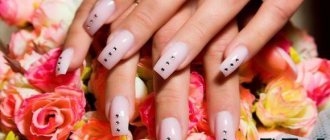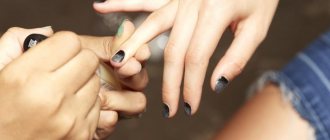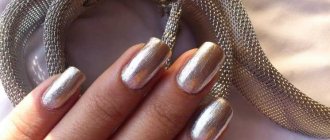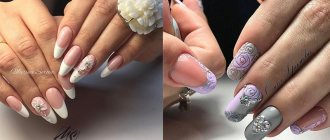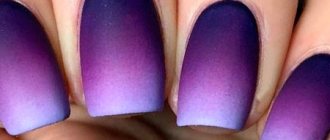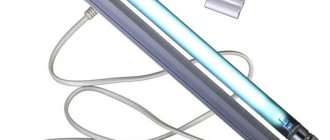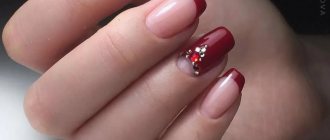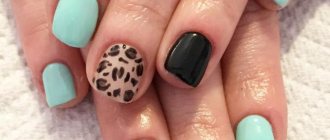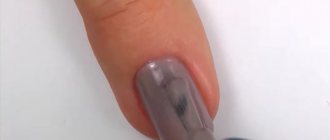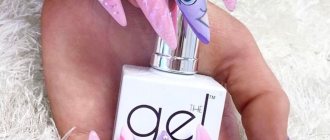08.04 2018
Author: Anna
Topic: Well-groomed nails
Hi all!
Over the past couple of decades, LED technology has rapidly burst into our everyday life.
Nowadays you won’t surprise anyone with powerful flashlights based on them, economical ice lamps used in car headlights, to illuminate our houses, street lamps, billboards, supermarket windows, cafes, restaurants or shops.
Therefore, it is not surprising that these innovations have also affected the modern beauty industry. After all, it has enormous hardware potential, which helps many representatives of the fair sex take care of themselves.
Among the most popular achievements of manicure art, which has recently gained particular popularity, is shellac. It gives many girls a long time to enjoy decorating their nails.
Until recently, such coatings were traditionally treated with ultraviolet light. However, today it has a well-deserved competitor - an ice lamp for manicure.
This is a fairly compact tool that is necessary for every master, which does not heat up during operation, allows you to reduce the polymerization time of modern coatings and quickly harden this material on your hands or feet.
Therefore, we will talk a little with you about UV lamps and their varieties, by the way, to the series that our “competitor” also belongs to. And then we’ll look specifically at what ice lamps are, what they are, what their characteristics are, pros, cons and operating features.
And all so that you can clearly navigate these issues and be able to decide on the right decision for yourself, and not buy something that may be imposed on you in a store.
- 1 What the market offers
- 2 What our heroine looks like
- 3 What criteria should you pay attention to when choosing an ice lamp for manicure 3.1 Power
- 3.2 Timer and reflector
- 3.3 Dimensions and design
Appearance, purpose, operating principle
An LED lamp is a device whose main function is to polymerize a special gel polish on nails . This happens due to the energy emitted by LEDs.
The design of the device is a plastic case, inside of which there are special light bulbs that emit light.
A control panel is located on the surface of the case. Almost all nail dryers have this structure. Different models differ in additional devices: timers, fans, retractable additional panels and other elements included in the set.
Selecting a top
The top coat completes the gel polish application procedure. In appearance, this is a transparent substance with a liquid consistency, reminiscent of transparent varnish. You should not classify clear varnish and top coat as the same product. First of all, the top coat is applied to fix the gel polish and protect the coating from mechanical damage. It contains components that provide resistance to water, shock, and household chemicals.
If you neglect the finishing coat, the varnish will last much less. In addition, the top provides shine and durability of the color of the varnish throughout the entire wear.
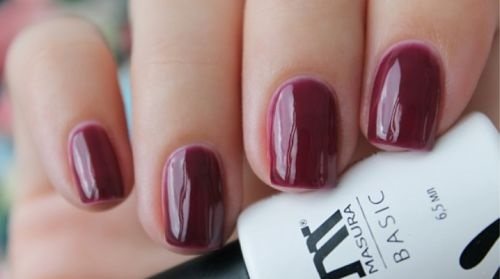
Bordeaux color
Types of top:
- With a glossy effect.
- With a matte effect.
- With a sticky layer.
- No sticky layer.
If a white sticky layer finish is used, preliminary degreasing of the nail plate is not done. If you plan to use stickers, rhinestones and other decorative elements, a glossy finish with a sticky layer is recommended. The decorations will hold on tighter and the nails will have a glossy look. You will need liquid to remove the sticky film.
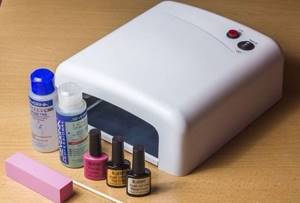
Manicure products
Types of lamps for manicure: comparative characteristics
Devices for drying nails differ in many criteria: power, appearance, functionality . You can compare the advantages and disadvantages of different types using a table.
| Lamp type | Principle of operation | Advantages | Flaws |
| Luminescent | The key elements of the device are fluorescent lamps | Economical energy consumption; service life – more than 7 thousand hours; affordable price. | Heats up to high temperatures, thereby increasing the risk of burning the nail covering; harms vision; The device contains mercury vapor, which is hazardous to health. |
| Gas light (CCFL lamp) | The work is based on gas glow | Operating life – up to 80 thousand hours; reduced risk of burns; no negative impact on the surface of nails and skin. | High price; the need for special storage conditions. |
| LED lamp | Powered by LEDs | Fast drying process; economical energy consumption; complete safety for the health of skin, eyes, nails; low heating temperature; long service life (up to 10 thousand hours). | High price; Not suitable for drying some types of nail coatings (for example, hard acrylic gels). |
| Hybrid | Connection of two types of lamps in the device: LED and CCFL | Used when applying all types of coating; fast-acting; the device does not heat up during use; service life does not depend on the number of starts; completely safe for health. | Not suitable for home use; has a high price. |
What does our heroine look like?
An ice lamp for manicure is a small handy device. It is loved by both professional nail artists and many girls to quickly and efficiently put their nails in order or correct small flaws on them.
These LED devices are traditionally equipped with:
- Factory box;
- LED lamp with USB cord;
- Adapter for 220 Volt outlet;
- Instructions with recommendations for use.
Typically, these small devices to help with manicure are lightweight, compact, equipped with a timer, have an ergonomic design and easy-to-use controls.
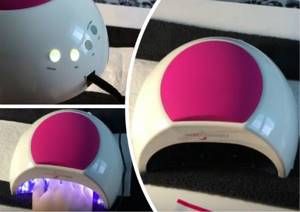
Working with such devices is very simple; for this you need:
- Connect the power cord to a power outlet;
- Press the timer activation button;
- Place your fingers with shellac freshly applied to the nails in a bright working lighting area for polymerization;
- After drying the gel coating, press the timer button again to turn off the device.
Unlike their luminescent counterparts, they:
- Cannot be heated;
- Save energy;
- Environmentally friendly;
- Durable, having a maximum guaranteed service life of continuous combustion of up to 5 years;
- Do not require frequent replacement or maintenance;
- Do not cause active pulsation of light flow;
- Do not contain harmful components for the human body;
- Allow shellac coating to polymerize at high speed;
- Adapted for modern LED gels;
- Don't bake your nails.
Moreover, in addition to all these wonderfully positive aspects, these lamps have only two drawbacks.
The first is the inability to polymerize solid gel formulations, due to the fact that they do not fall within their specific ultraviolet wavelengths, which are limited to a narrow range of 400-410 nm.
And the second drawback is associated with a fairly high price. At the same time, manufacturers are already encouraging that in the near future they will resolve this issue for the benefit of buyers.
Comparative characteristics of uv and led lamps in the following video.
Most popular models
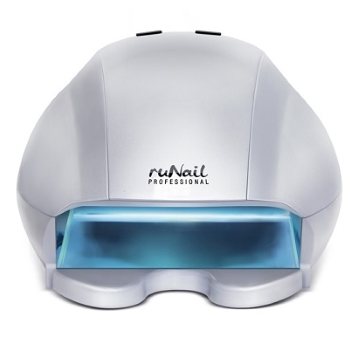
LED lamp RuNail 12W
The most popular models of LED lamps are:
- RuNail 12W for professional use is a universal device that uses LED and ultraviolet lamps. It has two operating modes that can dry any varnish materials. The device has a built-in timer that can be set to 60, 120 or 180 seconds of operation.
- DFS 6W LED lamp is an easy-to-use lamp available for use at home. The design of the device is open. It can be used for fingernails and toenails. Suitable for working with Opi Gel Colour, Gelish materials.
- Jessi Nail 9 is a compact lamp for those who offer field services. It dries almost all materials, but has one significant drawback: it does not provide the ability to dry all nails simultaneously.
When choosing a device for manicure, you need to decide on its type. It may be worth taking a closer look at ultraviolet (UV) or hybrid ones.
Using an LED lamp
Before using the device, you must carefully study the operating instructions. Particular attention should be paid to the following information:
- clarify the relationship between drying time and adjustable power ;
- study the list of materials the lamp is designed to work with ;
- read the list of precautions .
Proper use of the lamp will ensure high-quality manicure and the safety of the device for many years.
If you did not purchase an LED lamp from a professional store, this video will show you how to check the package, unpack, install and start using the device:
Induction bispectral
Review of the best LED lamps for plants
The principle of operation is similar to fluorescent lamps, however, they differ significantly in design. There are no internal electrodes in the induction lamp, which has a very positive effect on their service life. When used for about 12 hours a day, the lamp can last up to 20 years. Of course, over time, the brightness of the phytolamp decreases, but no more than 5% of the original values. It does not burn out during power surges, does not flicker and does not overheat, thanks to which induction lamps can be placed in close proximity to plants. The light output is as close as possible to natural light, thanks to which these lamps can be used as the only source of phytolight. The main and only drawback of lamps of this type is the very high price.
https://youtube.com/watch?v=gMOd0Uf35EM
LED with E27 socket
Consuming a minimum of electricity, LED lamps provide maximum light. They differ from other phytolamps in their long service life (about 50 thousand hours or more) and minimal heating. They can be compactly placed together with the ballast control unit. Thanks to the standard E27 base, they can be inserted into any lamp, which makes their operation several times more profitable.
Luminescent
They emit a lilac-pink color, which is beneficial for plants, but harmful to human vision, so lamps of this type should not be installed at home. If their installation is unavoidable, it is worth purchasing a protective mirror or matte screen in advance. Nowadays fluorescent lamps are produced as linear and energy-saving, but experienced gardeners prefer to use the former for a more uniform distribution of light and better light output.
Metal halide
High-pressure gas-discharge lamps differ from others by the presence of halides and metals to correct spectral characteristics. They do an excellent job of replenishing the lack of natural light in winter or when growing plants in an artificial environment. In addition, the advantages of phytolamps of this type include their small size, efficiency, cost-effectiveness and ease of operation.
Features of care
The manicure lamp is easy to use, and many models are available for use at home. In order for it to serve longer and remain operational, you need to follow the rules of caring for it:
- the device requires careful handling: it must be stored in a box, avoid shock and mechanical damage ;
- you need to take care of the serviceability of sockets to avoid voltage surges ;
- Do not use for a long time without interruption.
To avoid power surges, it is better to turn on the LED lamp through a surge protector.
Compliance with these rules will preserve the integrity of the LED lamp for a long time.
DIY manicure lamp: myth or truth
There is a lot of information on the Internet about how to make a manicure device with your own hands. It is proposed to make it from an empty box from the system unit or use copper plates for this. But not a single method guarantees high-quality operation of the device. The LED nail lamp has a complex structure, because for the gel polish to dry, many external conditions must be met.
You should not try to make the device yourself. It is better to contact a specialist or purchase an inexpensive, easy-to-use lamp for manicure at home.
An LED lamp is one of the most popular devices in professional circles for drying nails during design or extension. The question of choosing between this expensive device and a conventional UV lamp should be decided taking into account all the criteria listed in the article.
More interesting articles:
What does the market offer?
Among the variety of ultraviolet lamps for various manicure devices, the wave range of which is offered from a value of 310 to readings slightly higher than 400 nm, allows you to dry any gel nail coatings.
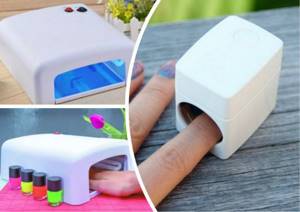
At the same time, how to choose a suitable device for yourself and not make a mistake is a rather problematic question. Therefore, let’s briefly go through its main positions. UV lamps for manicure can be:
- Luminescent. They attract buyers with a fairly low price and low power consumption. However, heating them to 50 degrees can not only heat the device itself, but also burn the nail during polymerization of the applied gel. At the same time, some of their negative characteristics can be noted here:
- Harmful pulsation of light for vision;
- The presence of mercury vapor in the lamp itself;
- There is a direct relationship between a decrease in luminous flux due to a drop in voltage in the network, and the resulting insufficiently carried out polymerization process, up to the coagulation of the gel coating.
- Gas-light. These are lamps filled with gas inside. They are based on cold cathode technology, such as neon glow. In the nail industry they are valued for:
- Harmless effect on human eyes;
- A slight burning sensation during polymerization of the nail coating;
- Less curling of gel polish with a thick layer of coating.
